Part of the fun of traveling to a new place is choosing where to stay, and a trip to Hokkaido is no different. Although some accommodation options here are the same as in other countries, some of the options in Japan are unique and new to travellers who haven’t visited before.
Where to stay in Hokkaido?
Travel Tips
By Ayaka

I love finding new places to stay as I travel throughout Hokkaido, and I am excited to share these with you!
In this article I will run through the most popular options for Hokkaido accommodation, outline some pros and cons of each and share some of my own favourite places to stay.
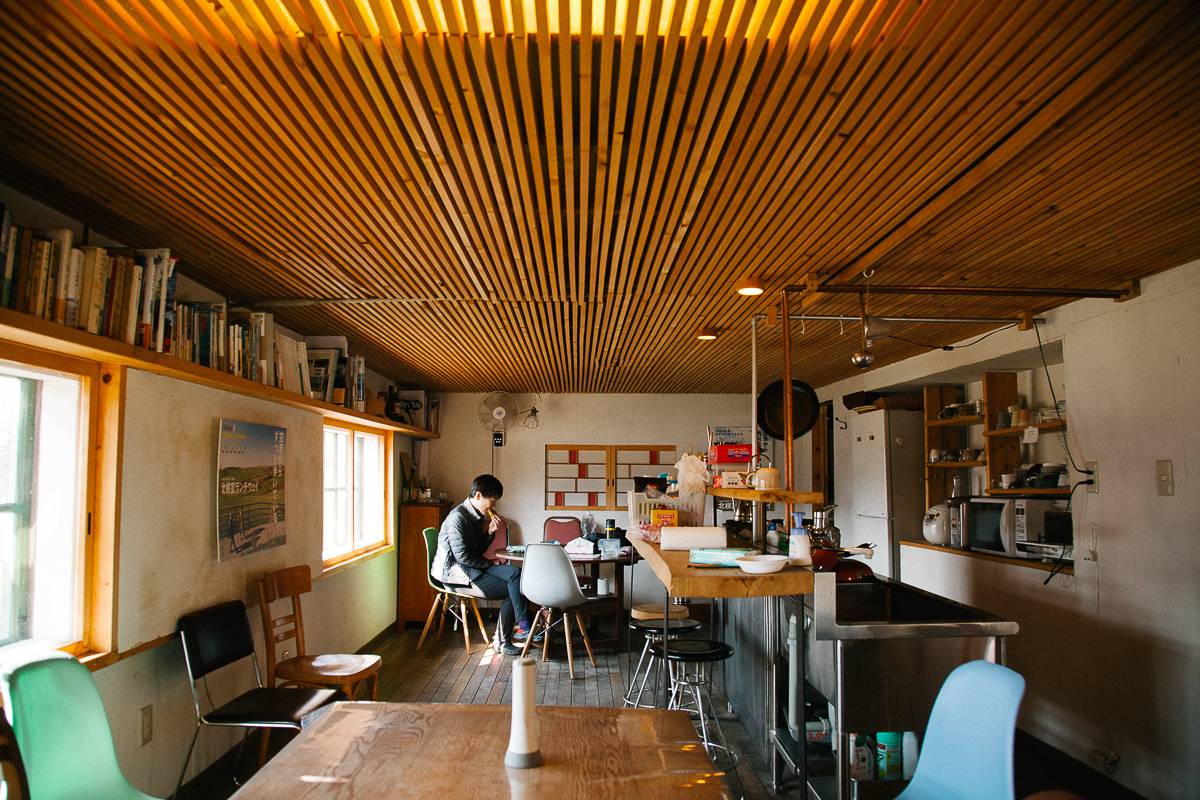
Hotels in Hokkaido
Hotels are available in the large to mid sized cities and towns throughout Hokkaido. Run by both international and Japanese companies, hotels here offer a standard service that won’t be much of a surprise to foreign travellers.
Hotels in Hokkaido have western style beds available and private bathrooms in room, though the bathrooms may be smaller than most international guests will be accustomed to.
Many hotels will have a restaurant on-site for breakfast and sometimes dinner, and some offer bars for nighttime relaxing as well. Some hotels even have hot spring baths inside the hotel, though not all.
Something to keep in mind – hotels in Japan are generally priced per-person rather than per-room. Hotels in Hokkaido will typically run from JP¥4,000 to JP¥20,000, depending on the level of luxury, location and time of year.
Advantages of Hotels
- An experience that will be familiar to foreign travellers
- Usually centrally-located
- Higher chance of English-speaking staff
Disadvantages of Hotels
- Smaller bathrooms than most foreign travellers are used to
- An experience that isn’t unique to Japan
My favourite hotel in Hokkaido
Located on the Rausu side of the Shiretoko peninsula, Shiretoko Serai is a lovely small hotel which opened in 2018. Near the ocean and right in the heart of the Shiretoko peninsula, Shiretoko Serai has it all – modern, spacious rooms and a truly delicious and locally-sourced dinner.
Most of the ingredients used for dinner and breakfast are from Hokkaido, and many come fresh from the markets that day – including the seafood!
You have easy access to the Shiretoko National Park, where you can see animals such as Ezo deer, the Ezo brown bear, foxes, the Stellar sea eagle, Blakinston’s fish owls, and even orcas and sperm whales.
After staying there this past autumn and loving it, I am looking forward to going back soon!
Ryokan in Hokkaido
Ryokan are traditional Japanese inns and offer an authentic Japanese experience that can’t be found anywhere else in the world.
Often found in hot spring areas, ryokan incorporate many elements from traditional Japanese culture. You will be sleeping in a tatami room on futon bedding, and you can enjoy the stay while wearing a traditional yukata gown – definitely try it out! Remember to wear the yukata with the right-side under the left, and feel free to wear it anywhere around the hotel.
Ryokan are especially known for their food – they specialise in kaiseki, which is a multi-course meal using local and seasonal ingredients. Dining is all part of the Ryokan experience and most will offer a package price which will include dinner and breakfast.
There is a large range of ryokan as well, from small and family-owned with only a few rooms, to large establishments. Due to this, ryokan often run a range of prices as well. Generally one night in a Ryokan will start at JP¥15,000 per person, but may cost more for the upmarket and exclusive ryokans, up to JP¥50,000 per night.
Advantages of Ryokan
- An authentic Japanese experience
- Usually have hot-spring baths in house
- Meals are included and will be unique and seasonal
Disadvantages of Ryokan
- More expensive than other accommodation types
- Not located everywhere
My favourite Ryokan in Hokkaido
Yukomanso in Asahidake Onsen
Yukomanso Asahidake Onsen is a quiet mountain onsen inn at the foot of Mt. Asahidake in the Daisetsuzan Range.
Yukomanso offers a warm and welcoming atmosphere, and close proximity to the ropeway and hiking trails gives quick access to those looking forward to climbing Asahidake, Hokkaido’s highest peak.
Perfect for a charming and authentic mountain ryokan stay in Daisetsuzan National Park.
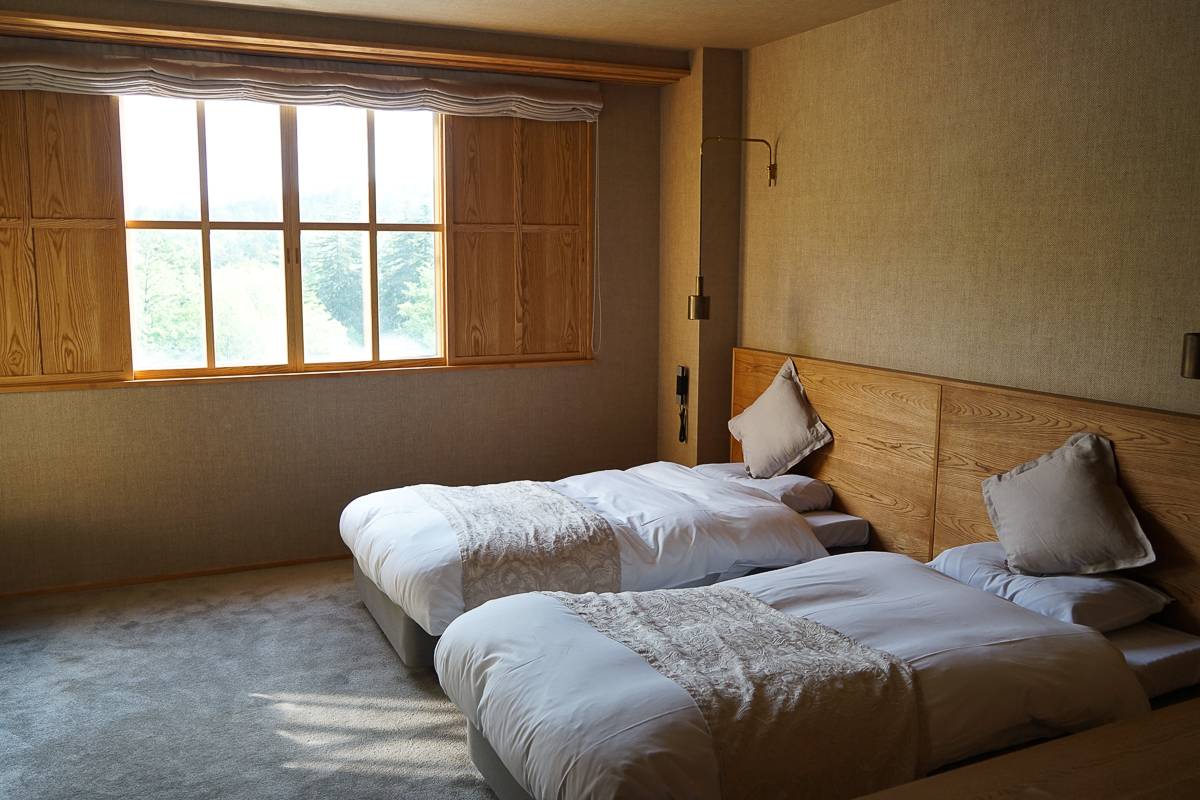
Nakamuraya
Nakamuraya, located in the Nukabira onsen area, is one of my favourite ryokans in Hokkaido. The area is quiet and isolated, and Nakamuraya itself offers a unique and relaxing experience.
The lobby and guest rooms have all been recently remodelled, and as a result it has a perfectly cozy interior that will tempt you to hang out in the lobby with your friends and traveling companions – if you can bring yourself away from the relaxing outdoor views from your room and the onsens!
Plus, the food is incredible! Fresh local mountain vegetables and a ton of local foods, Nakamuraya shouldn’t be missed!
See more about Nakamuraya Onsen on their website here (Japanese language only, sorry!)

Yuyado Daiichi
An isolated ryokan in Nakashibetsu, Yuyado Daiichi in the Yoroushi onsen area offers a large mix of unique onsens and a delicious kaiseki meal plan while enjoying the beautiful views.
You can often see the Blakinston’s fish owl in the area – the largest owl in the world but very rare and endangered.
The beautiful area around the ryokan offers the perfect opportunity for walks, and you can even enjoy mochi (rice cakes) freshly made every morning!

Minshuku & Pensions in Hokkaido
The word “minshuku” comes up a lot when searching for accommodation outside the major cities of Japan and can often leave visitors scratching their heads at the difference between them and other types of stays.
Minshuku are family-owned small establishments, and can be thought of as Japanese bed-and-breakfasts. Usually minshuku are located in more rural and remote places. Staying at a minshuku is like staying at someone’s house, and the meals that are served will be hearty local foods.
Remember to take off your shoes at the entrance and switch to the provided slippers, like you would when visiting someone’s house!
Pensions are similar to minshuku in that they have more of a western-style of accommodation, and will be more similar to a small hotel.
Minshuku usually offer futon bedding, though unlike in ryokans, guests will need to put them out themselves before going to sleep.
There may not be private bathrooms and toilets in each room, these are generally shared facilities for the floor.
Often minshuku will have shared baths and onsens as well, so you get to enjoy those while you stay!
Generally the cost per person will be around JP¥4,000 - JP¥10,000 a night.
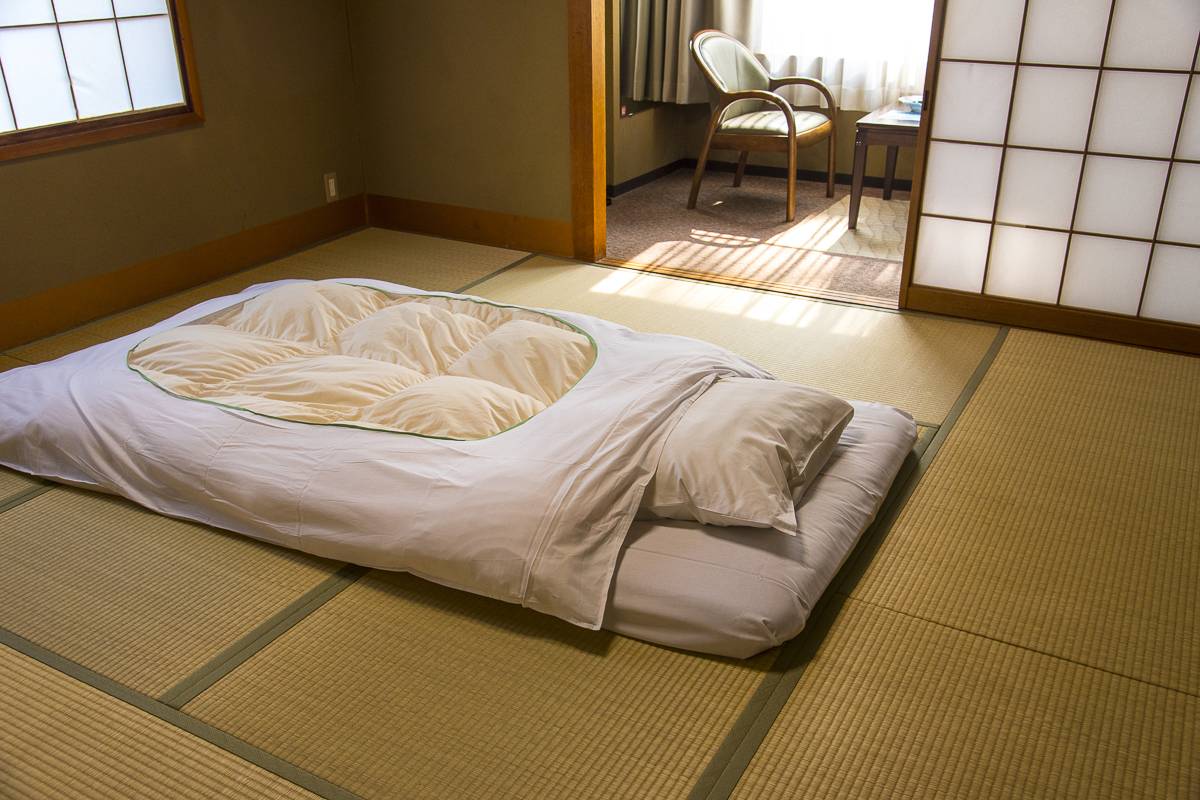
Advantages of Minshuku & Pensions
- Available even in remote places
- Will be similar to staying at a local’s house, good for meeting local people
- Opportunity to eat regional foods
Disadvantages of Minshuku & Pensions
- Staff will often not speak English
- Not as many amenities as hotels
My favourite Minshuku & Pensions in Hokkaido
Nature Inn Hanashin
A trip to Rebun Island is often high on the list for hiking enthusiasts, and when visiting the island I highly recommend you stay a couple of nights at the Nature Inn Hanashin!
Located by the sea, the staff at Nature Inn Hanashin are always welcoming and fully prepared for visitors to their inn. They even offer pick-ups and drop-offs from/to the ferry terminal.
Take the time in the evenings to relax with a hearty dinner and in an open-air bath, and remember to ask the staff for the latest information on the hiking trails if you need any help.
Find out more about Nature Inn Hanashin on their website here (Japanese language only)

Rera Mosir Maruzen Pension
Located on Rishiri Island, Rera Mosir is a comfortable and modern pension with a great view of Mt. Rishiri.
With hot-spring baths on site and delicious meals made of local foods, Rera Mosir is a great option for those wanting to hike Mt. Rishiri and experience the island.
The staff offer pickups from the ferry and airport, and run a car rental service for those who need it as well. They will also take you to the trailheads themselves – as early as 4 in the morning for those who want an early start!
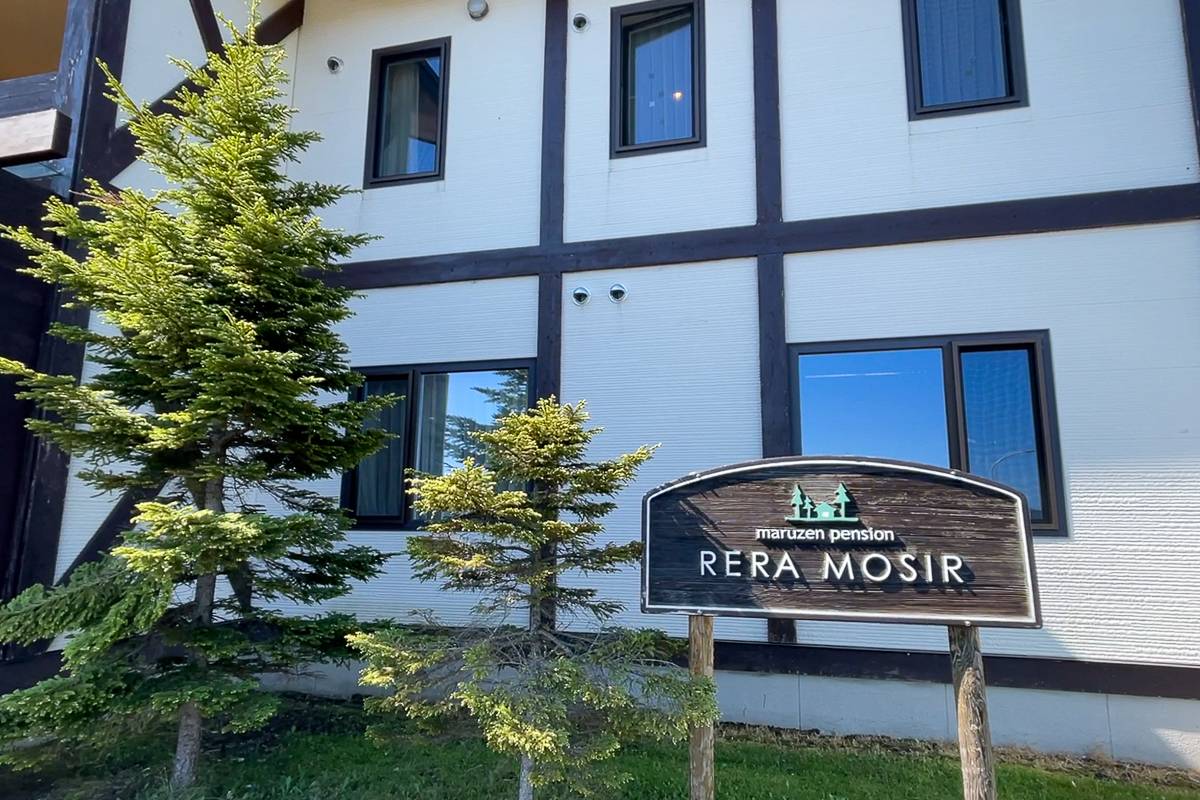
Mountain Inns in Hokkaido
Obviously not located all over Hokkaido, these mountain inns are all located at places like the trail heads into Daisetsuzan National Park.
Due to the volcanic nature of the area, these mountain inns all have hot spring baths, but as a result of their remote locations are a little more simple and rustic than ryokan and onsen resorts. However, these are great locations to stay for adventure travellers and those looking to hike in the Daisetsuzan Range!
Advantages of staying in Mountain Inns
- Great access to the hiking trails
- Hot spring baths
- Located in nature
Disadvantages of staying in Mountain Inns
- Less amenities than a ryokan or hotel will offer
- Remote location and may be difficult to get to without a rental car
My favourite Mountain Inns in Hokkaido
Daisetsu Kogen Onsen
Located down a long gravel road at the trail head for the Daisetsu Kogen-Numa hiking loop, this mountain inn has great access to the hiking trails and wonderful hot springs! Be careful driving down the road – there is no cell phone service, and you have a good chance of seeing deer and bears!
Dinner and breakfast is included when staying here, so you only need to bring lunch and snacks!
Find out more about Daisetsu Kogen Onsen on their website here (Japanese language only)

Kanno Onsen
Kanno Onsen is an isolated hot spring resort near Shikaoi. At the end of a country road with no cell phone service, it is well worth the trip to have a stay at Kanno Onsen.
Recently remodeled, this onsen hotel offers many different types of baths and offers a very comfortable stay.
In addition to trying out the hot springs at the hotel, you can also try the outdoor pools which are a short walk away. A map in the lobby of the hotel will give you directions to a myriad of natural outdoor hot springs for those feeling adventurous.
The hot springs bubble up from the ground along the Yuuyanbetsu River, so you can mix the hot and cold water together to get the right temperature. If you do visit the outdoor pools, feel free to wear a swimsuit.
See more about Kanno Onsen on their website here. (Japanese language only)

Kamihoroso
A short drive from the famous Furano ski area, Kamihoroso has indoor and outdoor hot springs and a sauna set in the Daisetsuzan range. This is a great location to stay for those interested in back country skiing, and the staff can prepare lunches for those who will be hiking.
For dinner, be sure to enjoy the Furano-sourced Wagyu beef!
See more about Kamihoroso Inn on their website here (Japanese language only)
Hakuginso
Hakuginso is also located near the base of Tokachi-dake, and is home to my favourite hot springs in Hokkaido! With large indoor cedar baths and multiple outdoor pools, Hakuginso is a great place to stay or for a day-visit.
Be aware – Hakuginso offers overnight accommodation but is not full serviced, so be sure to bring your own food and drinks. There are vending machines and a small shop for snacks and other things, however!
Visit in both summer or winter for hiking, backcountry skiing or snowshoeing.
Airbnb in Hokkaido
Airbnb has accommodation available all over the island, though still they remain mainly in cities. Areas catering to foreign visitors such as Sapporo, Niseko, and Furano have a lot offered, though unique lodgings are offered in rural areas as well.
The type of residences vary greatly – from shared houses with private rooms to entire cabins with outdoor baths attached. Depending on the location and time of year, prices will also be variable, and the ski areas will be especially busy in winter.
However if you are looking for privacy and don’t need the owner or a property manager on site, or are traveling in a large family group, a private house or apartment booked through Airbnb might be a good option for you.
Pros of Airbnb in Hokkaido
- Experience living like a local
- Can be good for a private experience – typically no other guests
Cons of Airbnb in Hokkaido
- No staff on site
- None of the amenities that come with other traditional locations
- Often will have to respect quiet hours if in a residential area
Capsule Hotels in Hokkaido
Capsule hotels are a common image many foreign travellers have of Japan – small box-like rooms stacked on top of each other in rows with many guests.
Often located in busy areas of cities, capsule hotels are useful for travellers who want a no-fuss place to sleep and aren’t looking to spend much time in their room.
The rooms typically have space for a bed or futon, a storage space for luggage, and a door or curtain for privacy. Because of the small size of the rooms, there will be shared bathrooms and baths for guests.
Depending on the facility, they also might have common rooms, shelves of comics, snacks, and sometimes restaurants.
Keep in mind – some capsule hotels cater exclusively to men or women alone, so be careful and be sure to check before making your reservation.
Because of the minimal amenities, capsule hotel rooms typically cost from JP¥2,000 - JP¥4,000.
Pros of staying in Capsule Hotels in Hokkaido
- No-fuss and simple accommodations
- Cheap
- Located in downtown
- A very uniquely Japanese experience
Cons of staying in Capsule Hotels in Hokkaido
- Cramped and not much space
- Not suitable for families or those travelling with children
- No private toilets or baths
Campgrounds in Hokkaido
Located all across Hokkaido, campgrounds are generally well maintained and come in a large variety of locations. Many campsites will have free-camping sites, allotted spaces, and cabins or lodges for rental.
Some will have coin-operated showers, while others will be within walking distance of hot springs. After arriving at the campsite, be sure to stop by the main office right away – you can get oriented and directed to your camping area, as well as pay whatever fees there are.
The main office will generally only be open during business hours, so if you arrive late at night be sure to stop by in the morning!
The cost of camping in Hokkaido can go from free to JP¥2,000 per night, though on average the costs are usually around JP¥500 yen.
Like camping in other parts of the world, keep your space neat and dispose of trash in the appropriate places. Remember to not feed the wildlife, and respect your neighbours!

Pros of staying in campgrounds in Hokkaido
- Campsites are all over Hokkaido, which gives greater flexibility for locations to stay
- Cheap
- Located in nature
- Most campsites are very well maintained
Cons of staying in campgrounds in Hokkaido
- Not all will have rentals, so bring any gear you need
- Risk of being affected by the weather
- Shared toilets and showers
See more about campgrounds in Hokkaido on the Japan Camp website and the Hokkaido Wilds websites.
Hostels, Youth Hostels & Guesthouses in Hokkaido
Hostels in Japan will be similar to the rest of the world, with shared dormitories and private rooms available in some locations.
Often with minimal facilities, guests will typically be in shared bunk rooms with communal bathrooms and dining areas. Some hostels will offer breakfast for an additional fee.
Hostels in Hokkaido typically cost around JP¥2,000 to JP¥4,000 yen a night.
Youth Hostels are similar to normal hostels, and despite their names are open to travellers of all ages. The only difference is that members of the Youth Hostel Association get a discount and all youth hostels will have family rooms in addition to a shared dormitory.
Guesthouses are options for long-term visitors to Japan – typically they are available for a month-long reservation at a time (though some offer week-long possibilities). Staying in a guesthouse is a more bare-bones option than the ones above and suited more for budget travellers or backpackers.
While they will not typically offer free amenities like towels or toothbrushes, they have spaces for guests to spend time with each other and those working at the guest house. Most do not offer meals, though there might be an attached cafe.
Guesthouses tend to be very cheap, ranging from JP¥2,000 to J3,500 yen a night.
Those staying at guesthouses live in a shared house with a private room, and are available typically in larger cities with a resident non-Japanese population.
For people looking for a long-term stay in one location, guesthouses can be a good option and save some of the costs and hassle of furnishing a location.
Keep in mind that all of those locations may have additional rules and curfews – be sure to find out what they are when you check in!
Pros of Hostels, Youth Hostels & Guesthouses in Hokkaido
- Cheap
- A good way to meet other travellers
Cons of Hostels, Youth Hostels & Guesthouses in Hokkaido
- Less privacy
- May have curfews
Mountain Huts in Hokkaido
Occasionally trips in the mountains can last longer than you’d expect or the weather unexpectedly changes, and you find yourself needing to overnight outside. Or, in some cases it’s all part of the plan – a long traverse or hike leads you to staying a night.
Luckily Hokkaido has a fair number of backcountry refuge huts for emergency use. While some huts have staff and need reservations, quite a few are unmanned except for maintenance or at specific time periods.
Mountain huts range in costs too. Some will have reservation fees, which might change depending on the time of the year or even be free.
Treat staying in a mountain hut like you would stay in someone’s home – take off your shoes, be neat and tidy, and respect other people who might be staying there. Also be sure to respect any rules the hut may have with regards to soaps and other chemicals, disposing of trash, and using the bathroom.
Although some huts will have bedding available for rent, others will not – be sure to check in advance. If the mountain hut is full you may need to stay outside in a tent so make sure you’re prepared in advance.
If meals are served or not also depends on the location so you might need to make your own. Be sure to look it up in advance if you think you will need or want to stay at a mountain hut!
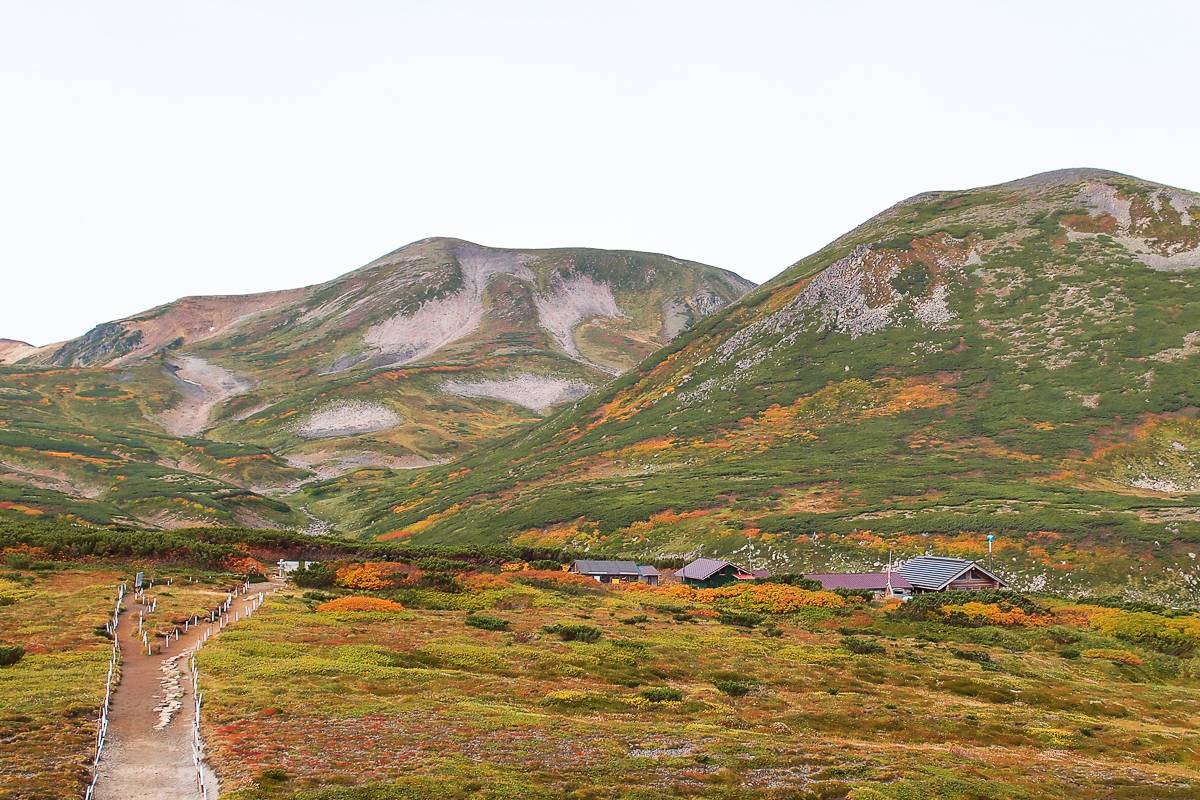
Pros of staying in Mountain Huts
- Outside in nature
- Convenient for long hikes & backpacking trips
- Meet other adventure travellers in Hokkaido
Cons of staying in Mountain Huts
- Very minimal facilities
- Will need to bring your own supplies for the trip
Where to stay in Hokkaido? A summary
There are many accommodation options in Hokkaido, some will be familiar and others new and unique. It’s all part of the Japan experience and a great time to try staying at an onsen, ryokan, or minshuku!
The staff will be welcoming and accommodating, so it is the perfect opportunity for a new experience. Even though I live in Hokkaido, I am always excited when I get to stay at my favourite onsen or discover a new ryokan for the first time.
Figuring out where to stay on your trip to Hokkaido can be overwhelming as there are so many wonderful options, not to mention the fact that many of the accommodation operators in the more remote parts of Hokkaido won’t speak English. But that’s where we come in, here at Adventure Hokkaido we know all the best places to stay all over the island and have included all our favourites in our Hokkaido Adventure tours.
One of the biggest advantages of joining a tour is that you don’t have to make a single accommodation booking, they’re all included so you can relax and leave all that to us.
The accommodation on our tours is a one of the ways we love to share our culture, there’s nothing more Japanese than falling asleep on your futon after a relaxing soak in an onsen while gazing out at the mountains after a fun-filled day hiking, cycling or exploring. These are the moments which make us so proud of our home and what we love sharing with our guests most of all.
If you have any questions please get in touch so we can share our knowledge and love of Hokkaido with you!
We hope to see you here soon.
Take a look at our Self-Guided Tours!
Explore Hokkaido under your own steam. Check out our full list of Self-Guided Tours!